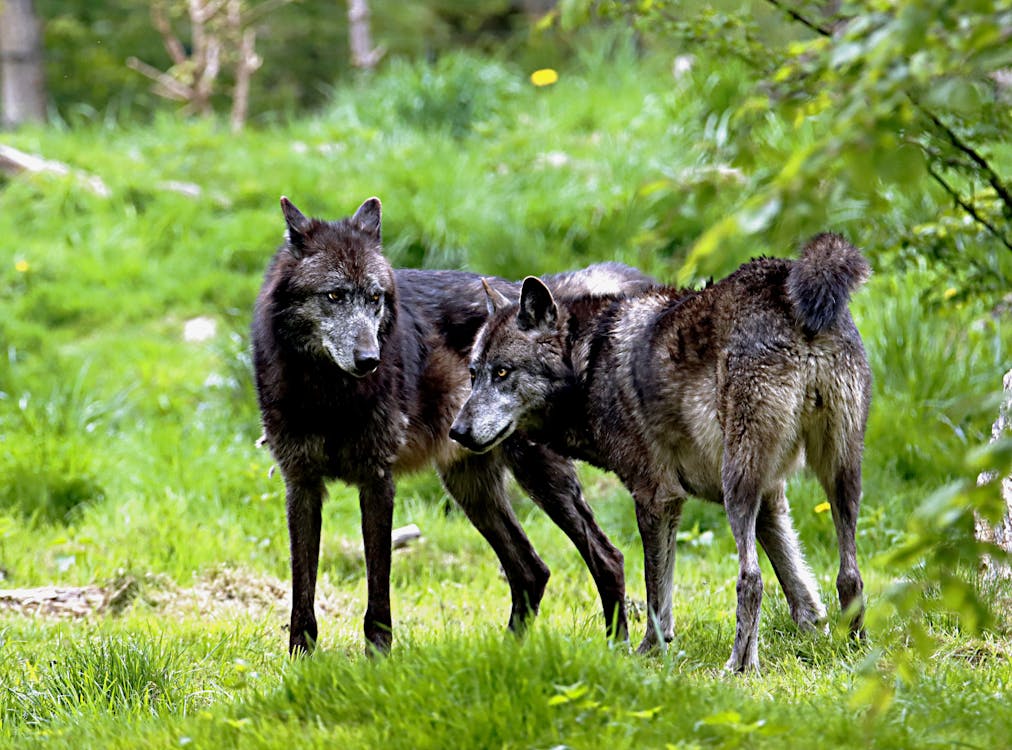Wolves have long been regarded as a top predator in ecosystems where they exist, and their presence plays a crucial role in maintaining the balance of these environments. One of the most significant impacts wolves have is on the populations of large herbivores, particularly deer and elk. Through predation, wolves not only control the size of these populations but also influence their behavior, health, and the broader ecological landscape. This predator-prey dynamic has far-reaching consequences for the health of ecosystems, promoting biodiversity and ecosystem resilience.
1. Population Control
One of the most direct ways in which wolves influence deer and elk populations is through predation. By preying on these large herbivores, wolves help to prevent their numbers from growing unchecked. Without natural predators, deer and elk populations can expand rapidly, leading to overgrazing. Overgrazing, in turn, can deplete plant life, particularly grasses and shrubs, which form the foundation of food chains for many species.
Unchecked herbivore populations can lead to significant ecological degradation, resulting in loss of vegetation, soil erosion, and decreased habitat quality for other species. Wolves act as a natural check on these populations, preventing them from exceeding the carrying capacity of their environment. This balance is particularly important in areas where human hunting or other predator species are not enough to control herbivore numbers effectively.
2. Selective Predation: Strengthening the Gene Pool
Wolves often target weaker, older, sick, or injured animals when hunting deer and elk. This selective predation helps to strengthen the overall health of the prey population. By removing individuals that are less fit, wolves reduce the spread of disease and ensure that only the strongest animals survive and reproduce. This natural selection process helps to maintain healthier and more resilient deer and elk populations.
In ecosystems where wolves are absent, deer and elk populations may grow rapidly, but the animals are not necessarily healthy. In these cases, disease outbreaks, starvation, and other health issues can become more common. Wolves’ selective hunting helps to reduce these issues by naturally culling weaker animals from the herd.
3. Behavioral Changes: “The Ecology of Fear”
Beyond controlling population size and health, wolves also have a profound effect on the behavior of deer and elk. The presence of wolves instills a sense of vigilance in these herbivores, a phenomenon ecologists refer to as “the ecology of fear.” Deer and elk alter their foraging patterns and avoid areas where they are most vulnerable to predation, such as open fields or riverbanks. This behavioral change prevents overgrazing in sensitive areas, such as riparian zones, where plant life is critical for water retention, soil stabilization, and providing habitat for other species.
In the absence of wolves, deer and elk may congregate in such areas without fear, leading to overgrazing and long-term damage to these habitats. The presence of wolves, therefore, encourages a more balanced and sustainable distribution of herbivores across the landscape, reducing the ecological strain on specific areas.
4. Trophic Cascades: Far-Reaching Ecological Effects
Wolves’ influence extends beyond their direct impact on deer and elk populations. Their presence triggers “trophic cascades,” a chain of effects that ripple through the ecosystem. By controlling herbivore numbers and altering their behavior, wolves help to promote the recovery of plant species, which in turn benefits other species that rely on healthy vegetation.
For example, in Yellowstone National Park, the reintroduction of wolves in the 1990s led to the recovery of aspen and willow trees along riverbanks. This recovery improved habitats for songbirds, beavers, and other wildlife. Additionally, healthier plant communities help stabilize riverbanks, reduce erosion, and improve water quality. Wolves’ role in maintaining these ecosystems highlights their importance as keystone species—species that have a disproportionately large impact on their environment relative to their abundance.
5. Coexistence with Human Populations
While the ecological benefits of wolves are well-documented, their presence can sometimes lead to conflict with human populations, particularly in areas where livestock farming or hunting are prevalent. Wolves may occasionally prey on livestock, leading to economic losses for farmers. Additionally, hunters may view wolves as competitors, as they reduce the populations of game animals like deer and elk. However, many conservationists argue that healthy ecosystems, including those with wolves, ultimately provide long-term benefits to human communities as well. For example, healthier forests and grasslands, supported by balanced herbivore populations, can lead to better water quality and greater biodiversity, which supports activities such as eco-tourism.
Programs that encourage coexistence between humans and wolves, such as compensation schemes for livestock losses and the use of non-lethal deterrents, are essential for fostering harmonious relationships. Education about the ecological benefits of wolves can also help to shift public perceptions and reduce human-wolf conflicts.
Conclusion
Wolves play a pivotal role in maintaining healthy deer and elk populations through population control, selective predation, and influencing prey behavior. Their presence has far-reaching effects on ecosystems, promoting biodiversity and ensuring that plant and animal communities remain balanced and resilient. The benefits of wolves extend well beyond the species they prey on, making them vital components of the ecosystems they inhabit. As we continue to learn more about these complex dynamics, it becomes increasingly clear that wolves are essential not just as predators, but as stewards of ecological health and balance.

